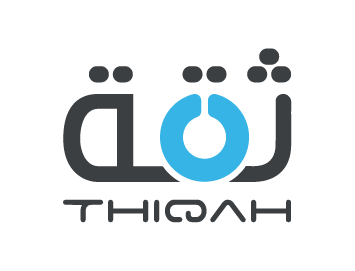The most common reason employees leave a company isn’t salary disputes or workload—it’s a lack of growth and development opportunities.
When workers feel stagnant, disengagement follows, and eventually, so does their resignation.
A learning culture is not simply a catalogue of training courses.
It’s an organizational environment where learning is a core value, curiosity is encouraged, and continuous improvement is woven into the daily work experience.
In such a culture, the pursuit of knowledge is not an occasional event—it’s a way of life.
This guide offers a practical, step-by-step framework for moving beyond sporadic training events to truly fostering continuous learning at work.
You’ll discover how to make learning part of your company’s DNA, unlocking higher employee engagement through training, stronger retention, and the agility needed to succeed in an ever-changing business landscape.
Start your learning journey today with Balanced Score Training Center.
What is a Learning Culture? (And Why It's Your Ultimate Competitive Advantage)
Should there be enough dedication for learning and to create a learning culture?
Beyond the Training Budget: It’s a Mindset, Not a Program
Many organizations mistakenly believe they can “buy” a learning culture through expensive training programs.
But building a learning culture is not about pouring money into an LMS or hosting a few annual workshops.
It’s about creating a shift from top-down, compliance-focused training to a self-directed, continuous learning model where employees take ownership of their development.
When learning becomes a habit, not a one-off event, it fuels innovation, adaptability, and long-term organizational success.
The Business Case: The Impact of Learning on Employee Retention & Innovation
A strong learning culture directly impacts business performance.
Companies with robust development opportunities report higher retention rates, because employees feel valued and see a future with the organization.
Benefits include:
- Lower turnover: Career development is consistently ranked as a top reason employees stay.
- Increased agility: Teams adapt faster to industry changes.
- Better problem-solving: Continuous learners bring fresh ideas and new approaches.
The impact of learning on employee retention is measurable—organizations that invest in development see up to 50% lower voluntary turnover rates.
The Foundation: Creating a Growth Mindset vs. a Fixed Mindset
Carol Dweck’s research shows that people with a growth mindset believe skills can be developed through effort and learning, while those with a fixed mindset believe abilities are innate and unchangeable.
- Growth Mindset: Embraces challenges, learns from feedback, sees effort as a path to mastery.
- Fixed Mindset: Avoids challenges, resists feedback, sees effort as pointless if “not naturally talented.”
Without a growth mindset, a learning culture can’t take root.
Leaders should champion the belief that everyone can grow, regardless of current skill level.
Become a leader yourself with our training courses in Casablanca.
The 5 Pillars of a Thriving Learning Culture
There are five main pillars for any learning culture to thrive.
Pillar 1: Visible Leadership Buy-In
Leaders must model the behaviors they want to see.
This means openly sharing what they’re learning, admitting when they don’t know something, and investing in resources for their teams.
Pillar 2: Psychological Safety for Curiosity
Employees will only ask questions and take risks if they know it’s safe to do so.
Create an environment where experimentation is encouraged, mistakes are treated as learning opportunities, and curiosity is rewarded—not punished.
Pillar 3: Robust Knowledge Sharing Strategies
Effective knowledge sharing strategies turn individual insights into collective wisdom.
Practical methods include:
- Mentorship programs: Pairing experienced employees with new hires.
- Lunch and learn sessions: Informal talks that spread skills across departments.
- Internal wikis: Easily accessible, searchable repositories of company knowledge.
- Peer-to-peer coaching: Encouraging collaborative problem-solving.
Pillar 4: Access to Resources and Dedicated Time
It’s not enough to tell employees to learn—you must give them the time and tools.
This can include:
- Learning platforms (LMS or LXP)
- Subscriptions to online course providers
Dedicated “learning hours” blocked into the work week
Pillar 5: Recognition and Rewards for Learning
When you celebrate learning achievements—whether through certificates, promotions, or public recognition—you reinforce that learning is valued and integral to career growth.
Practical Strategies for Fostering Continuous Learning at Work
In order to maintain continuous learning at work, certain strategies must be followed, including:
Integrating Learning into Daily Workflow (Microlearning)
Microlearning delivers content in short, digestible bursts that fit naturally into the workday. Employees can watch a 5-minute video or complete a quick interactive lesson without disrupting their schedules.
Empowering Manager-as-Coach
Managers play a pivotal role in a learning culture. Acting as coaches, they identify growth opportunities during day-to-day work, offer constructive feedback, and help employees connect learning to business outcomes.
Boosting Employee Engagement Through Training and Development
Training is not just about skill-building—it’s a core part of your employee value proposition. When employees see the company investing in their development, engagement levels rise, and they’re more likely to stay long-term.
Creating Personalized Learning Pathways
Not all employees need the same training. By offering personalized learning pathways, you empower individuals to pursue courses, projects, and mentoring opportunities aligned with their career goals.
How to Measure the Success of Your Learning Culture
Yes, the learning is measurable, so is its success.
This can be done through:
Moving Beyond Completion Rates: Measuring Behavior Change
Traditional metrics like course completion rates don’t capture real impact. Instead, track whether employees are applying new skills on the job and whether those skills are improving performance.
Using Employee Engagement and Pulse Surveys
Short, regular surveys can reveal whether employees feel supported in their learning goals, have access to resources, and perceive opportunities for growth.
Tying Learning Initiatives to Business KPIs
Ultimately, learning efforts should be connected to measurable business outcomes—like reduced turnover, faster project delivery, or higher sales.
This makes it easier to justify investment in our Training and Talent Management courses.
Conclusion: Learning is the New Work
Building a learning culture is not a quick initiative—it’s a long-term commitment built on leadership, safety, sharing, resources, and recognition.
When learning becomes part of the organizational identity, employees thrive, innovation accelerates, and the company gains a lasting competitive edge.
In the future of work, the most successful companies won’t be those with the smartest people, but those that can learn the fastest.
Contact us to start a path of continuous learning today.
Frequently Asked Questions (FAQ)
People also ask the following questions about learning cultures:
1. What are the key characteristics of a strong learning culture?
Key characteristics include proactive leadership support, psychological safety, open knowledge sharing, ample learning resources, and a shared belief that skills can be developed (a growth mindset).
2. What is the role of managers in a learning culture?
Managers are the most critical component.
Their role is to act as coaches, not just bosses—encouraging development, identifying learning opportunities in daily work, and modeling learning behavior themselves.
3. How do you promote a learning culture in a remote or hybrid team?
In a remote setting, you must be more intentional.
Use asynchronous learning tools, host virtual “lunch and learns,” create digital mentorship programs, and publicly recognize learning achievements in team communications.
4. How long does it take to build a learning culture?
While new programs can be launched in months, shifting mindsets across an entire organization often takes 18–24 months of consistent effort.
Read more:
What is Professional Development? A Guide to Lifelong Career Growth



















